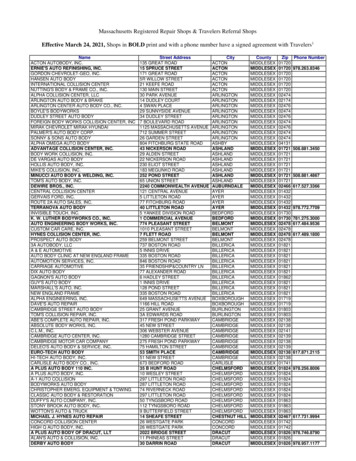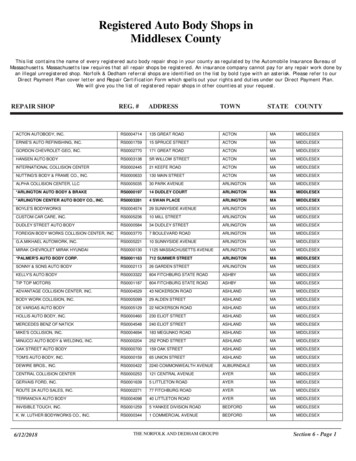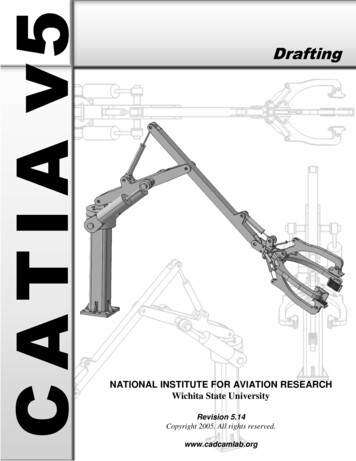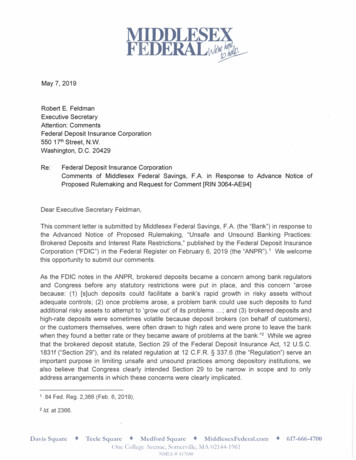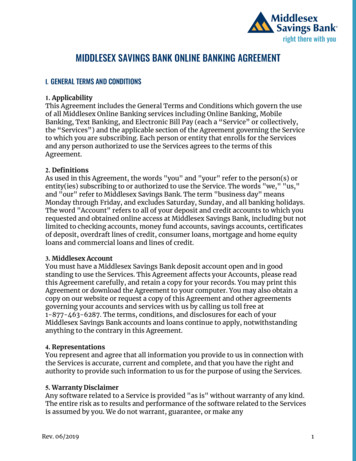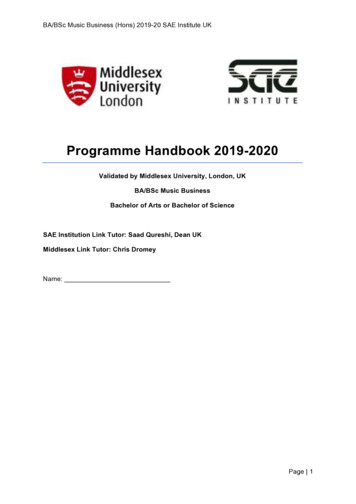
Transcription
Drawing Section Views
What is a “Section View” ? A section view is a view used on a drawing toshow an area or hidden part of an object bycutting away or removing some of thatobject.The cut line is called a “cutting plane”, andcan be done in several ways.The following slides will help show the severalmethods or types of “section views”
Visualizing the Cutting Plane It is very important to Visualize what the part willlook like after it is cut open.Choosing the type of section and location of thecutting plane.Making the cut and drawing the view in the properlocation.
Full Section In a full section, the cutting plane linepasses fully through the part.Normally a view is replaced with the fullsection view.The section-lined areas are thoseportions that have been in actualcontact with the cutting-plane.
Full Section
Replacing the view
Half Section Half Section is used to the exterior andinterior of the part in the same view.The cutting-plane line cuts halfwaythrough the part and removes onequarter of the material.The line that separates the differenttypes (interior and exterior) may be acenterline or a visible line.
Half Section
Section Lining Materials – CommonmaterialsThe symbol for cast ironcan be used for mostsection views.Refer to any commondrafting text foradditional symbols.
Section Lining 45 degree angle lines should be used.1/8” between lines.All lines should be uniformly spacedThin sections may be blackened incompletelySpacing lines by eye increases speed
Section Lining
Section Lining – Line Placement Lines should never be parallel orperpendicular to the object lines.If the outline of the object has 45degree lines, 30 or 60 degree linesshould be used.Assemblies with several parts should belined with varying angle section lines.
Section Lining – Line Placement
Offset Sections Used to show parts and features thatdo not line up with each other.Cutting-plane line does not travel in astraight line.The offsets or bends in the cuttingplane line do not show in the section.The versatility of this section makes itvery useful.
Offset Sections
Aligned Sections Usually used on symmetrical circularparts.Place the cutting-plane line to show themost detail.All parts and details are rotated into thesection view.Ribs and spokes can be left un-lined forbetter clarity in the section view.
Aligned Section
Revolved Sections Used to show a small portion of adrawing.Show a cross-section of an area turned90 degrees or perpendicular to theobject.Put into a drawing to show an area notnormally shown.
Revolved Sections
Broken-out Sections Used to generate a section for a smallarea without using a cutting-plane line.Removes a small amount of material toshow the interior details.Always used in an orthographic view.Used to enhance the orthographic viewby giving the viewer a better look atkey interior details.
Broken-out Sections
Sectioning Shafts Used to show a break in a longer partallowing better used of drawing surface.Gives the impression of a 3-D break on theshaft.Adds a touch of flair to the drawing.
Sectioning Shafts
Assembly Sections Shows how parts fit togetherAllows better clarity with a complicatedassembly of parts.Shows how parts not only fit together,but allows for a visual view of how theyfunction.
Assemblies
Bibliography Technical Drawing, Eleventh Edition; Giesecke, Mitchell, Spencer,Hill, Dygdon, Novak; Prentice Hall, Upper Saddle River, NJ 07458;ISBN 0-13-022569-XGiesecke, Frederick E; Mitchell, Alva; Spencer, Henry C.; Hill, IvanLeroy; Dygdon, John T.; Novak, James E., TECHNICAL DRAWING,11th Edition, @2000. Electronically reproduced by permission ofPearson Education, Inc., Upper Saddle River, New Jersey.Engineering-TechnicalDrafting and Graphics; J.W. Giachino, Henry J. Beukema; American Technical Society, Chicago, Illinois Second Edition
Having fun with Inventor
What is a “Section View” ? A section view is a view used on a drawing to show an area or hidden part of an object by cutting away or removing some of that object. The cut line is c
